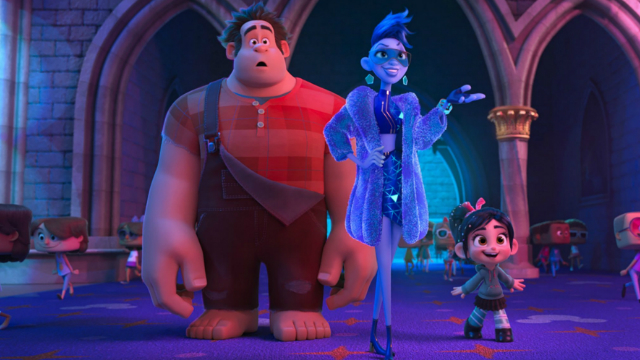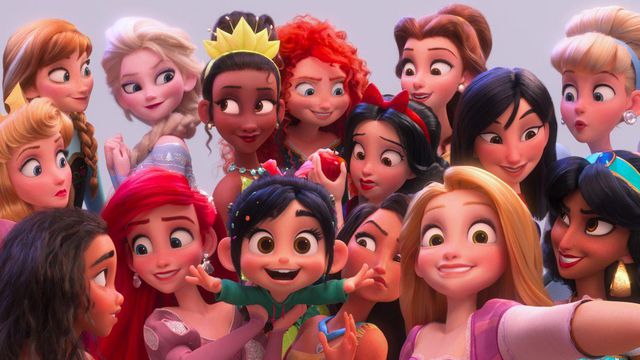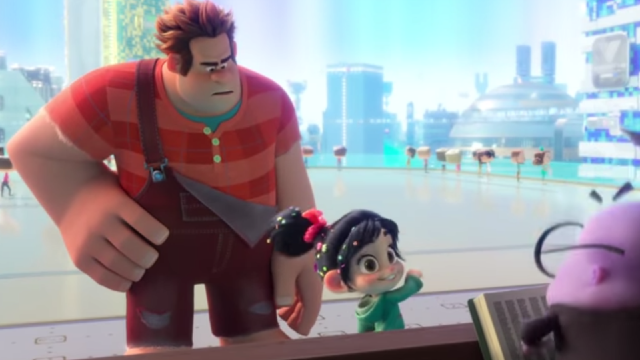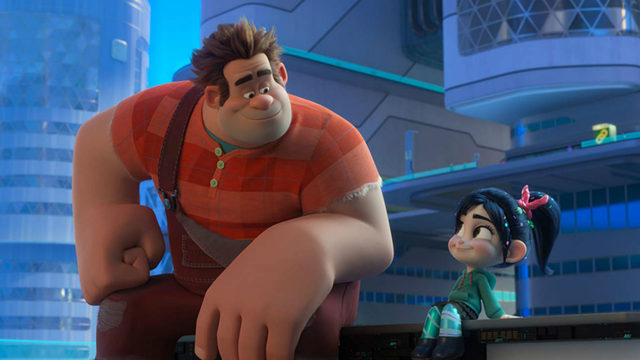It’s hard to believe that Wreck-It Ralph is already 6 years old. Although the film was a bit of a surprise in terms of quality, it also had a great deal of heart. It instantly created two new classic Disney characters with Ralph and Vanellope, but it also paid homage to many established ones. Part of what made the original film such a delight was the world that it created. It was a premise that – while often outlandish – managed to wrap itself up in a natural and convincing way. In other words, Wreck-It Ralph felt like a one-off premise that doesn’t necessarily work as a potential franchise.
Luckily, the film’s 2018 sequel – titled Ralph Breaks the Internet – justifies its existence in a way that feels worthy of its predecessor. As the title implies, the film takes Ralph and Vanellope to the Internet in search of a rare replacement part for her game, Sugar Rush. Considering how far technology has come, moving to the Internet seems like a natural progression for the story. The film’s interpretation of the Internet acts as both a literal and figurative one, offering a great deal subtext for the filmmakers to delve into. For the most part, Ralph Breaks the Internet fulfills this premise, advancing the story in new and interesting directions.

A large part of the reason why Ralph Breaks the Internet is so successful is that brings back most of the talent from the first, including the co-directing duo of Rich Moore and Phil Johnston. With the sequel, Moore and Johnston are able to dig deeper into these characters while also providing a heartfelt story about finding a sense of belonging. The screenplay by Johnston and Pamela Ribon takes full advantage of the scenario in humorous and surprisingly deep ways. A premise like this could have very much been surface-level. Luckily, the filmmakers are smart enough to provide a story that often pokes fun at the way society has adapted to the age of information.
On a character level, Ralph Breaks the Internet also manages to progress Vanellope and Ralph’s relationship in unexpected ways. Despite their friendship, Ralph and Vanellope drive the conflict of the film. It makes for an interesting dynamic between the two, even if the motivations are often simple. The film manages to hold up literal and figurative mirrors to its characters in a surprising way. There’s a scene towards the middle of the second act that is the perfect encapsulation of this idea. Although the trailers diminish some of the surprise, this scene featuring many of the Disney princesses is absolute brilliance. At the same time, it’s scenes like this that also proves the limitations of the premise.

Despite a solid structure in the first and third acts, the middle of the story often meanders. As a result, the thematic impact of the movie feels a bit muddled. It’s interesting how a movie that is trying to comment on the pitfalls of online culture literally falls into the same trap. In the story, our characters marvel at the many possibilities that the Internet provides. The filmmakers revel in these opportunities just as the characters do, and the result is a surface-level thematic core. The movie makes a valiant effort, but it ultimately fails at trying to provide any kind of meaningful message about the drawbacks of the Internet culture.
Slightly more troubling is the message that Ralph Breaks the Internet sends to young viewers about technology. Throughout the second act, the movie asks bunch of moral questions that it doesn’t really provide the answer to. It tries to poke fun at on online comment sections, gaming culture and even the dark web. Unfortunately, there’s simply not enough meat on the bones for the film to make anything of this. Sure, Ralph Breaks the Internet does send a positive message about the importance of friendship. At the same time, the theme gets convoluted when the film uses our dependency on technology to deliver that message.

Although Ralph Breaks the Internet sometimes struggles to find itself, the movie is an absolute visual feast for the senses. The real treat here is the way that the movie actually visualizes the Internet itself. It’s a smart interpretation of the way that the Internet would work if it were actually a physical thing. Ralph Breaks the Internet also features a number of cameos, but there’s an over-reliance on appearances from Disney characters. It’s not that these cameos aren’t welcomed, but they just that they feel a bit derivative compared to the first film. For a franchise that staked its name on obscure references this movie carries a severely apparent lack of cross-promotion. Ultimately, Ralph Breaks the Internet will probably not age as well as its predecessor.
Wreck-It Ralph carried a certain sense of nostalgia that made it feel timeless. While Ralph Breaks the Internet is certainly a well-told story, it lacks the x-factor that made the first film so appealing. Ralph Breaks the Internet is a film that explores its premise just enough to be satisfying. At the same time, it probably won’t be a film that people will be talking about years down the line. With that said, Ralph Breaks the Internet is certainly a crowd-pleasing movie. It features great vocal performances from John C. Reilly and Sarah Silverman, along with superb animation and direction. As Disney Animation’s first feature-length theatrical sequel in over fifteen years, Ralph Breaks the Internet had a lot of hype to live up to. In this respect, the movie meets but never exceeds the expectations of the first.
Rating: 3.5/5









